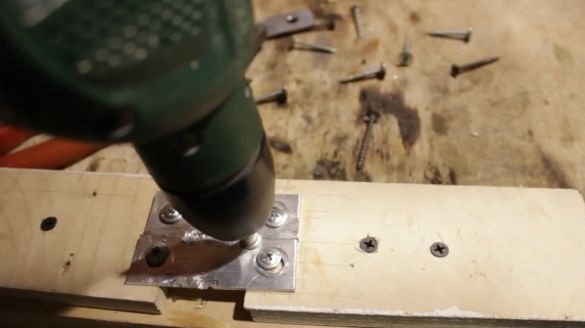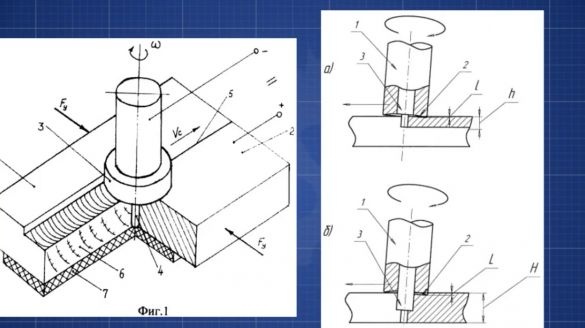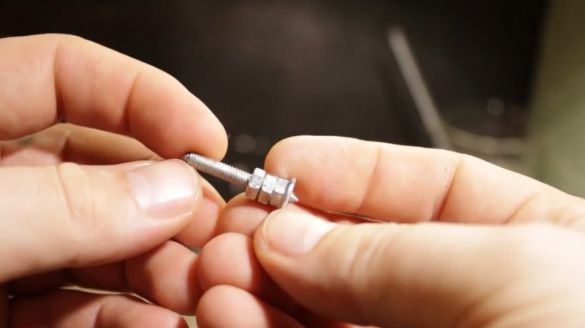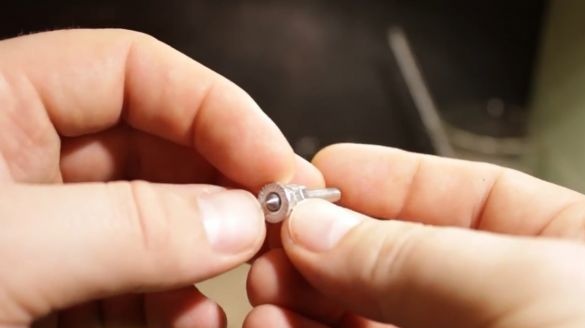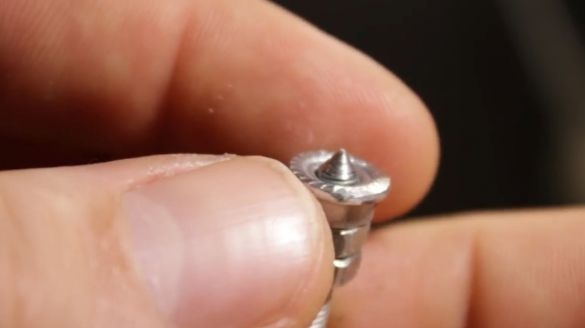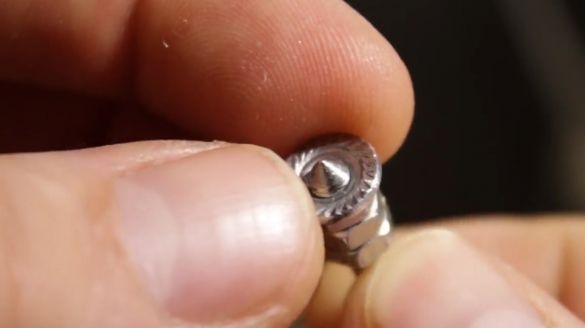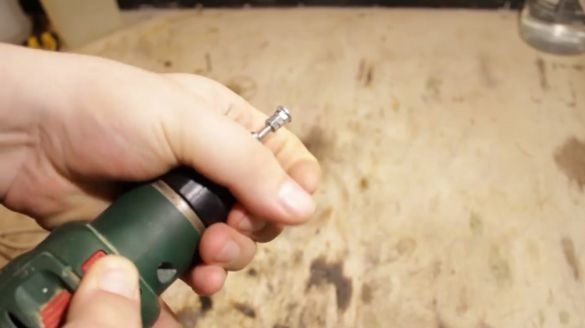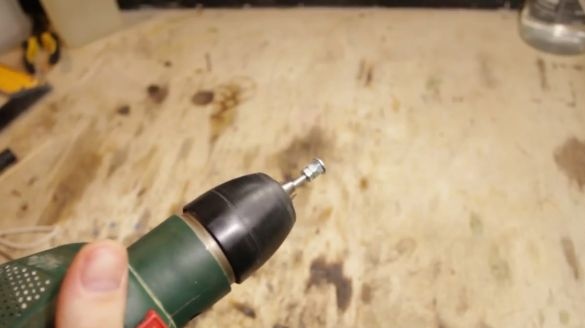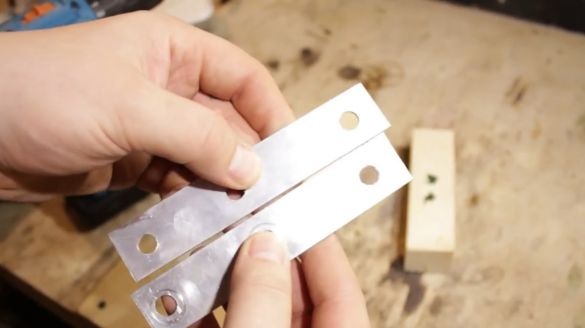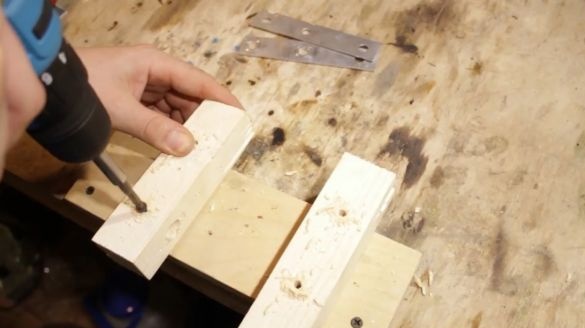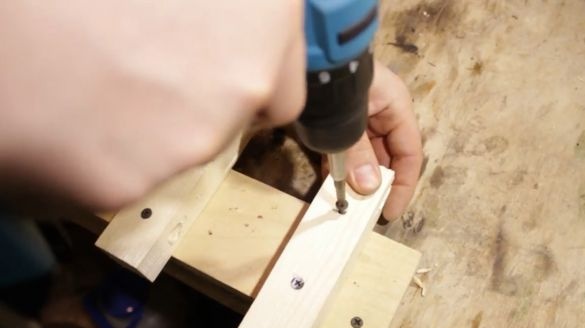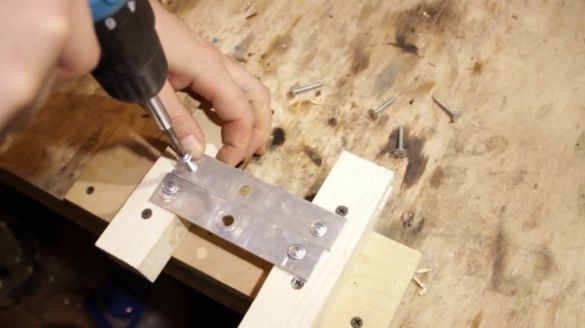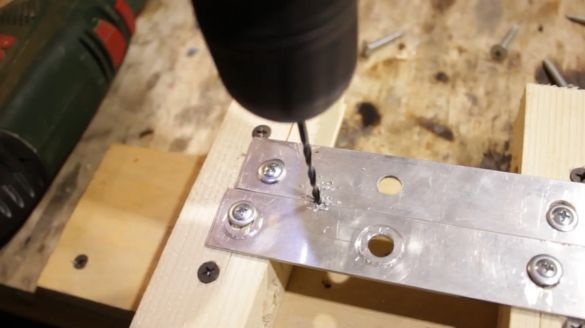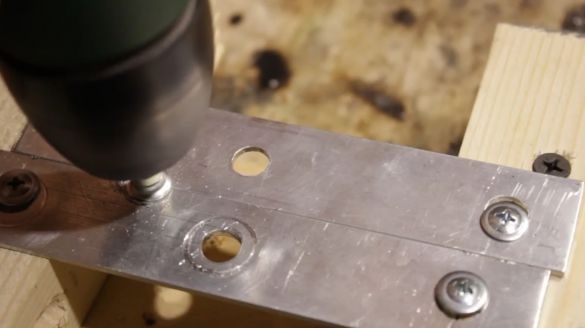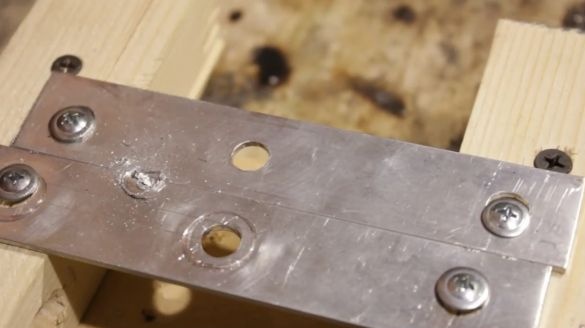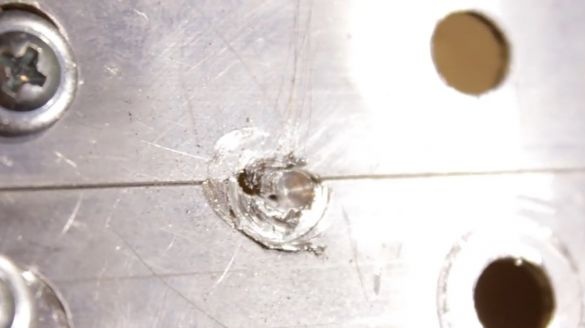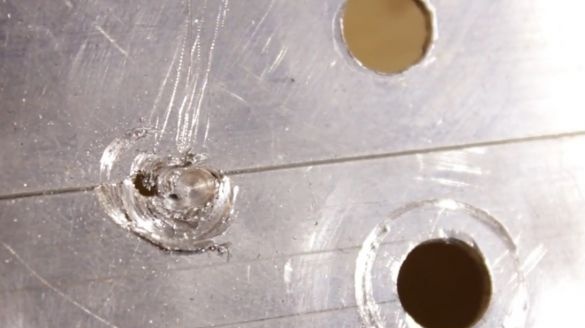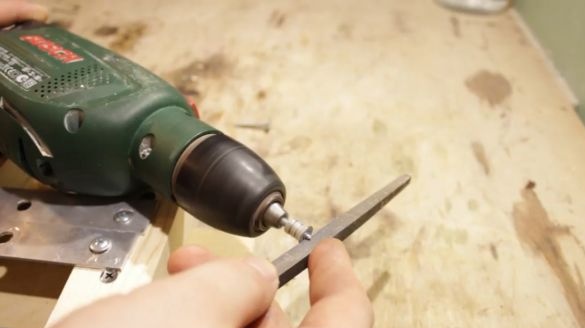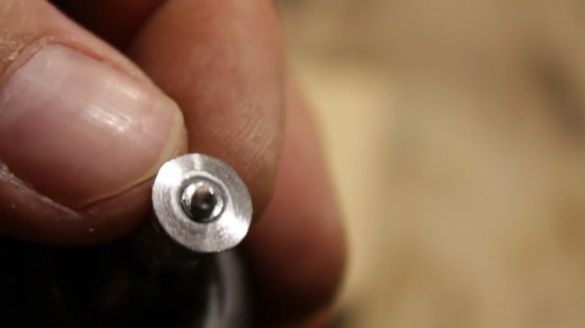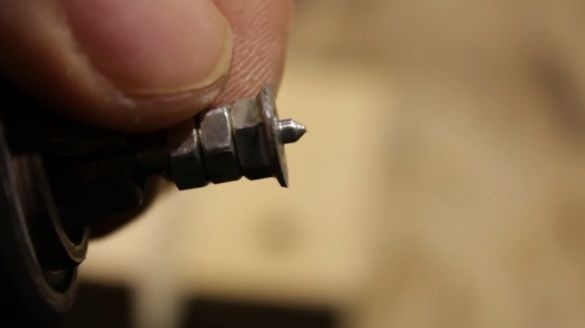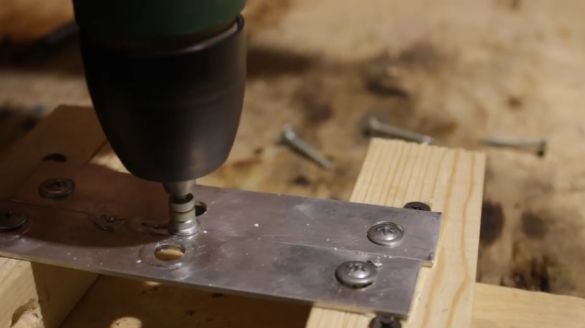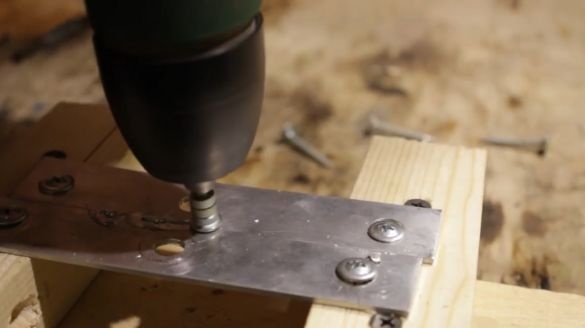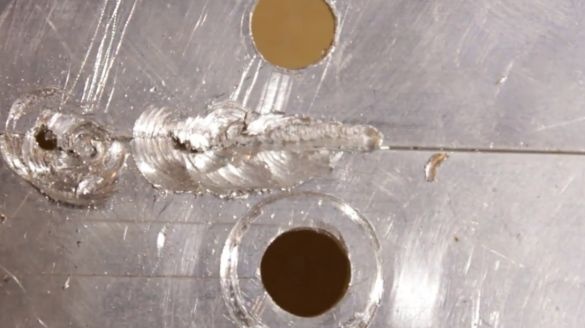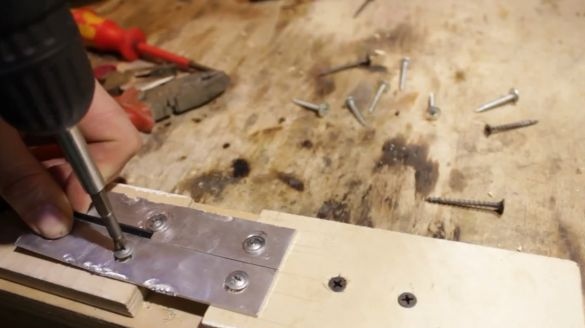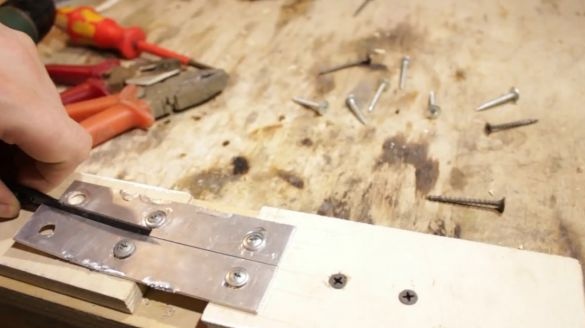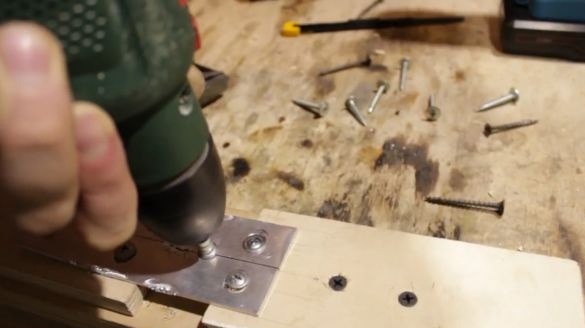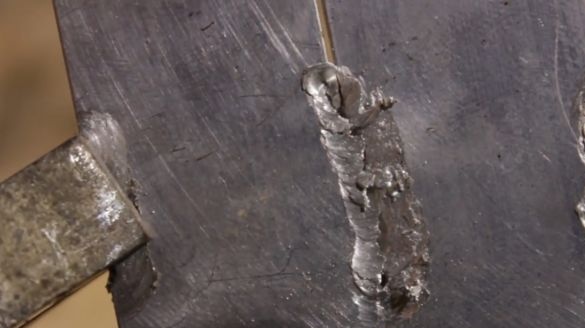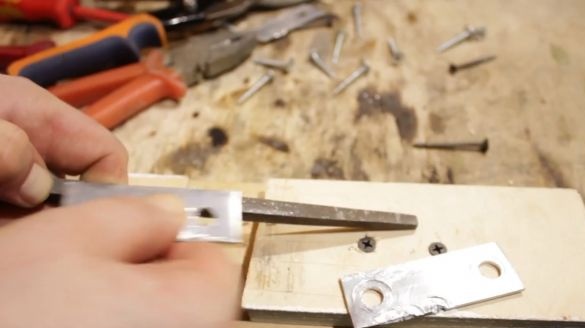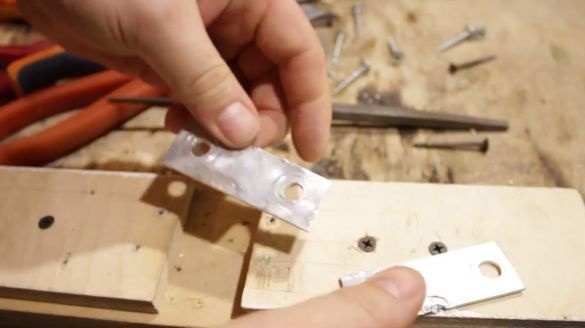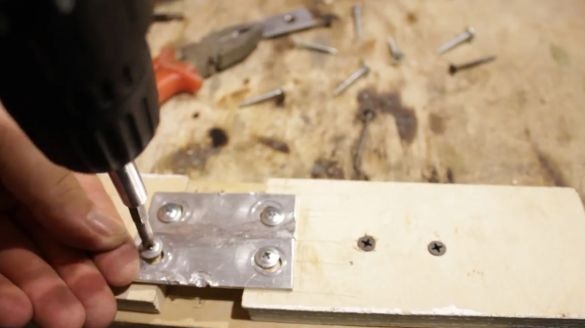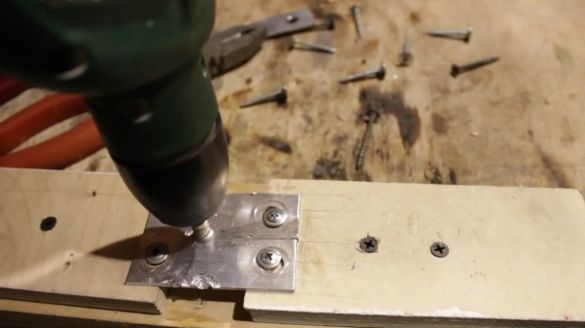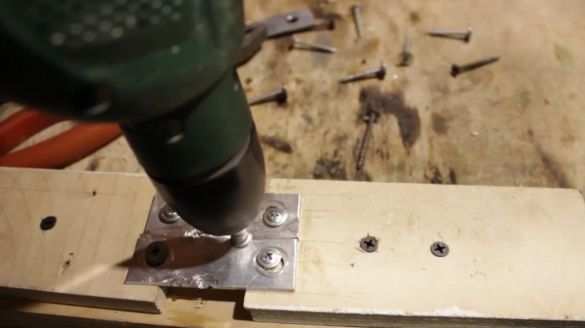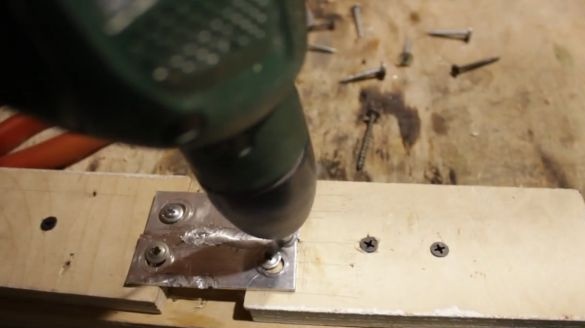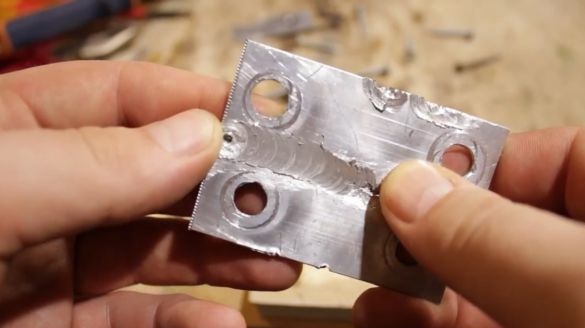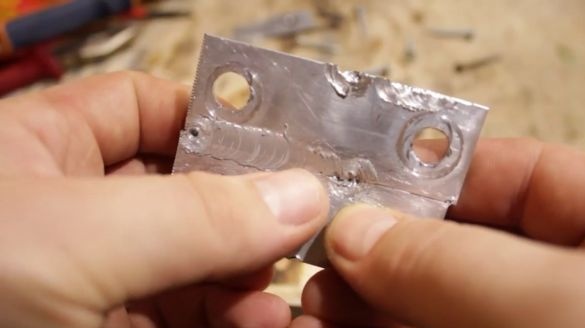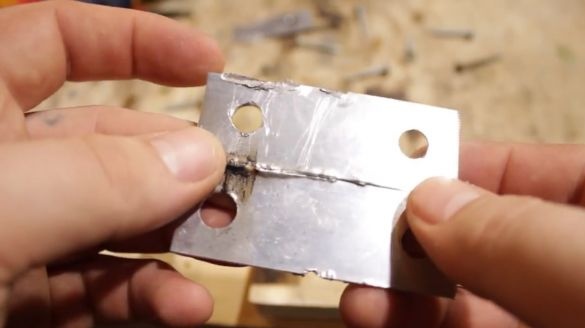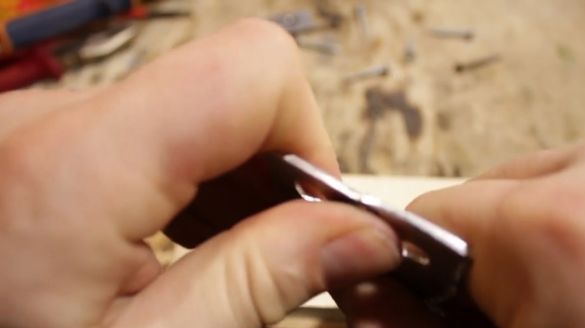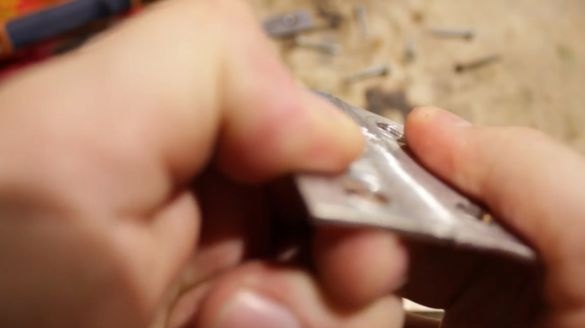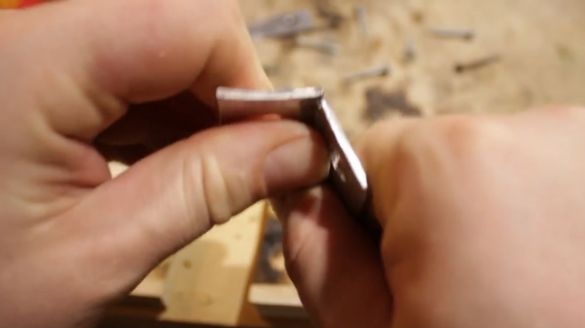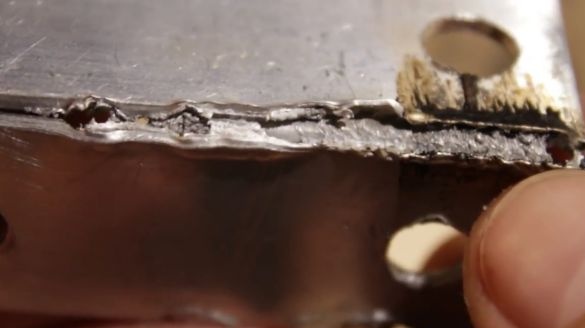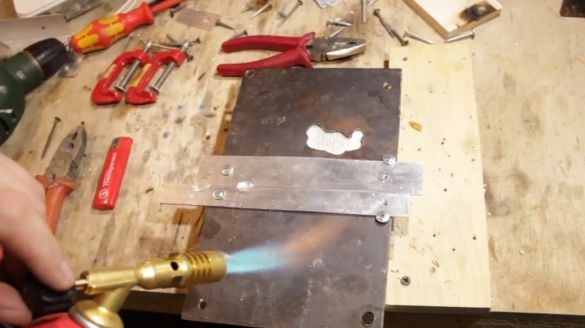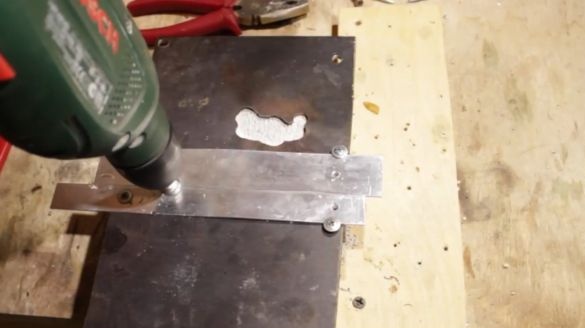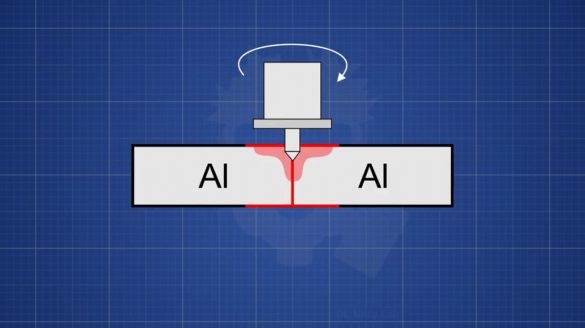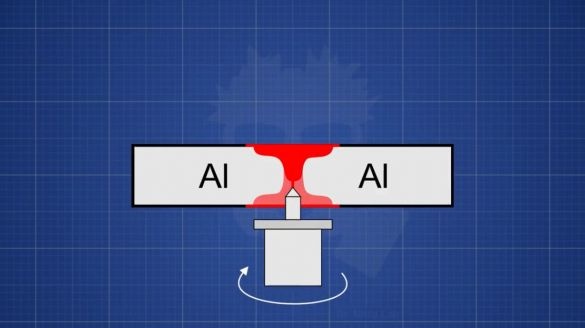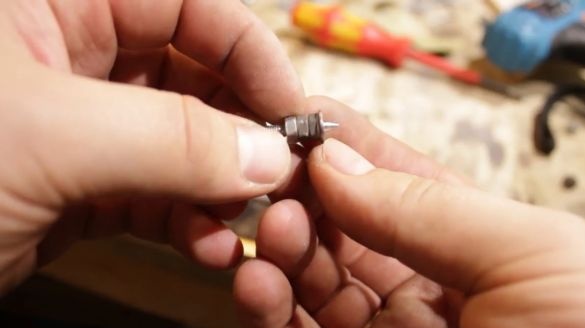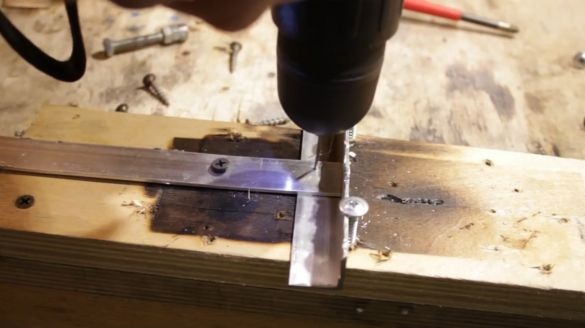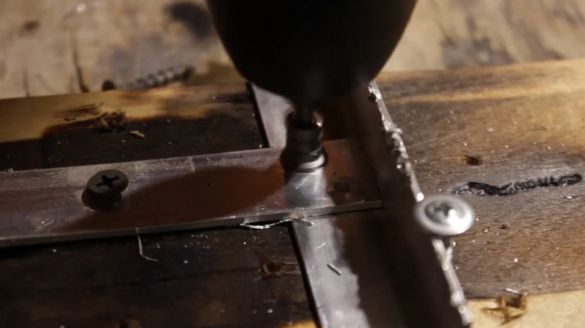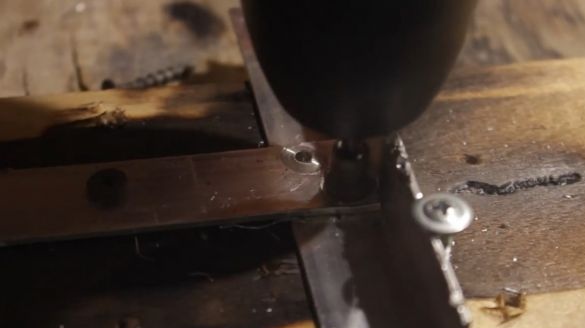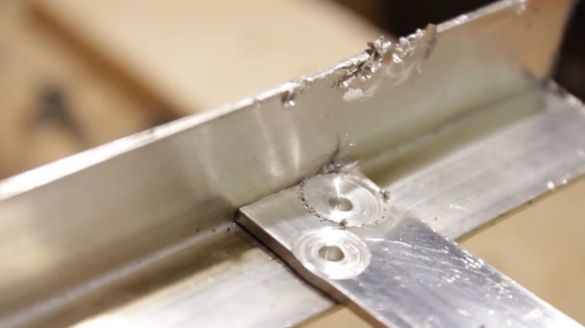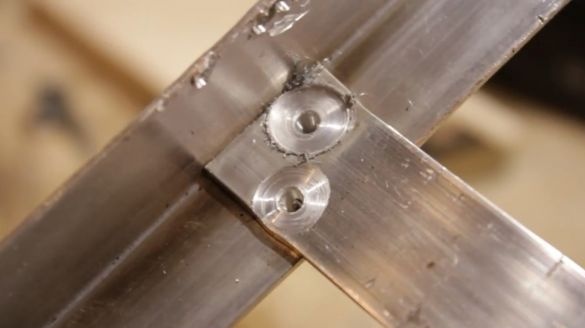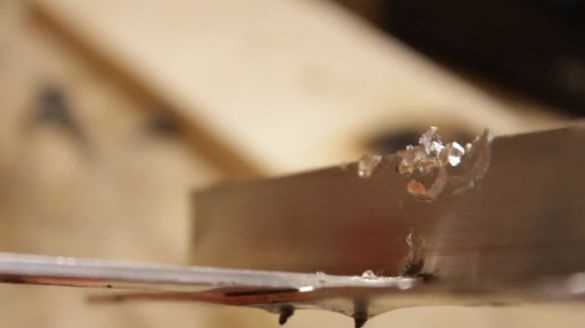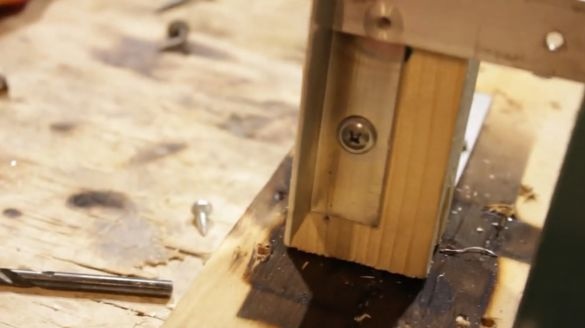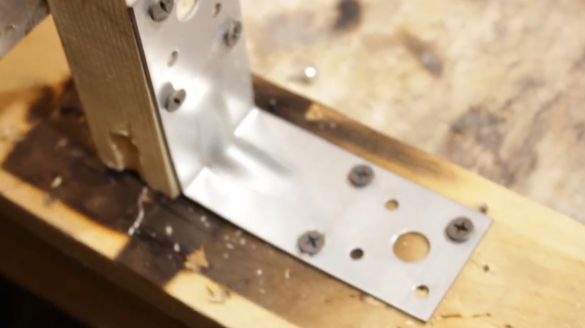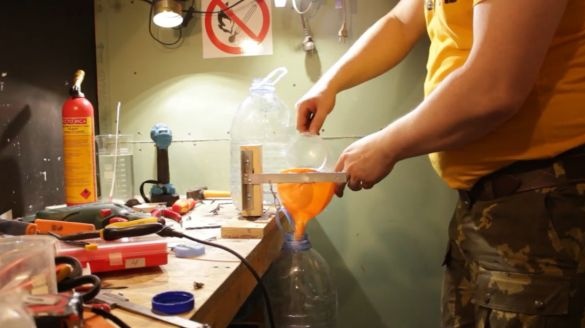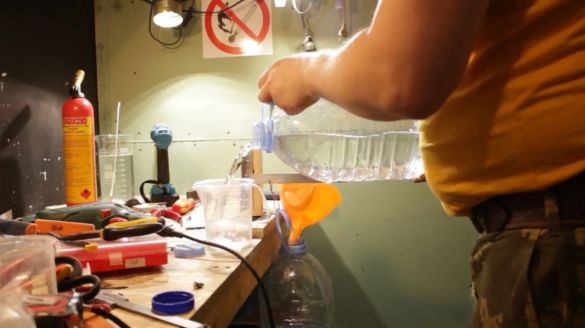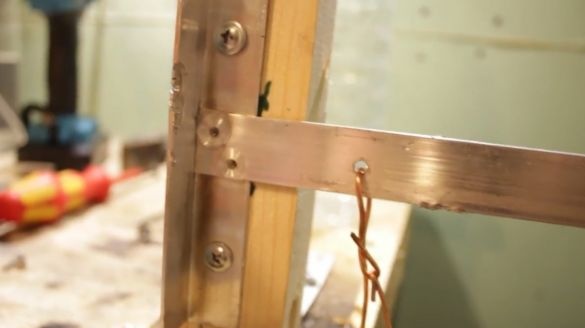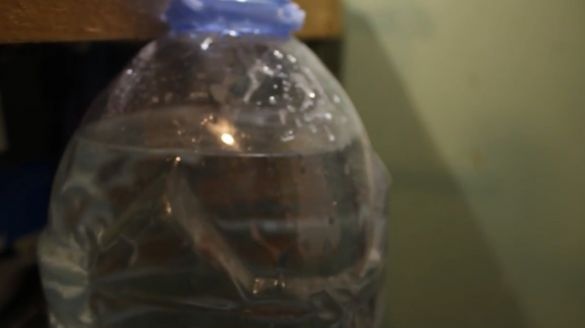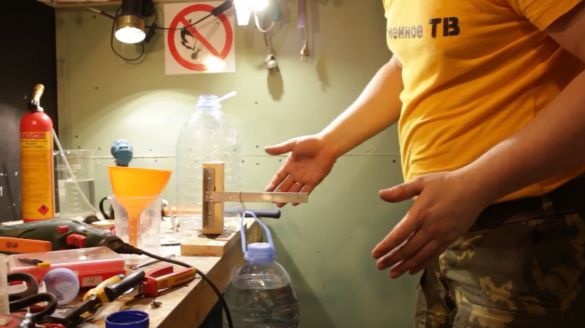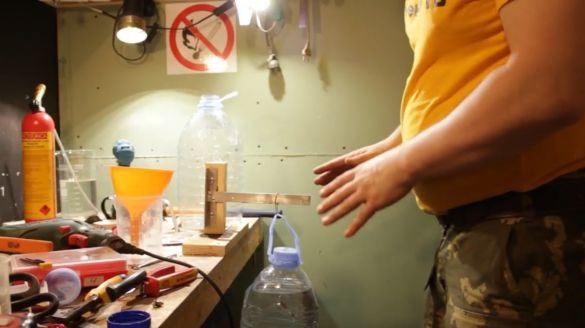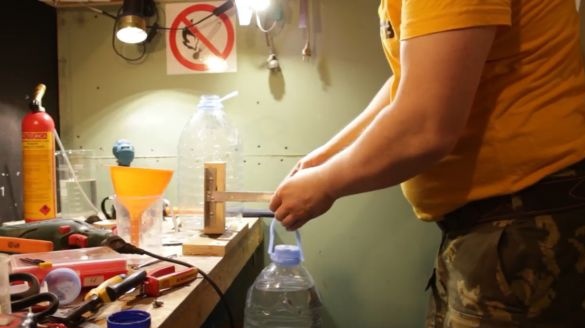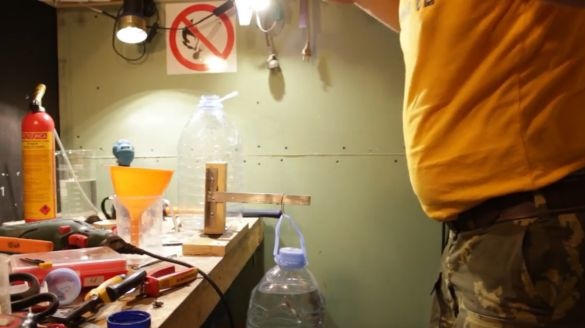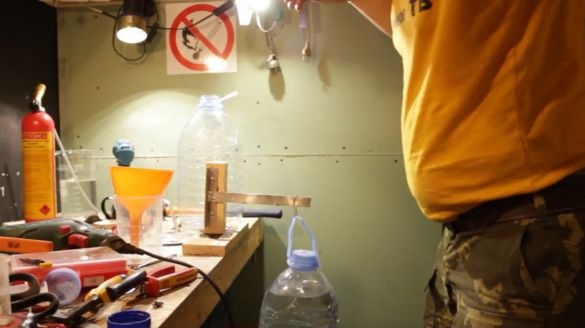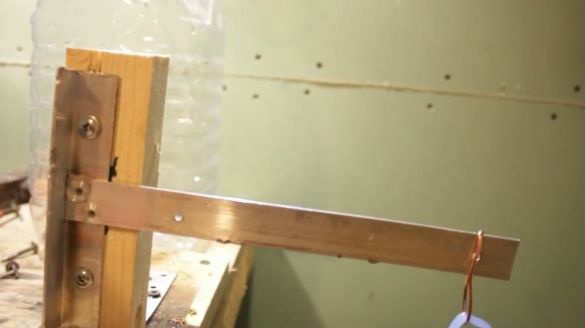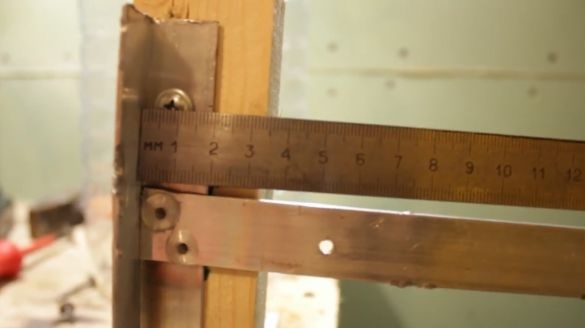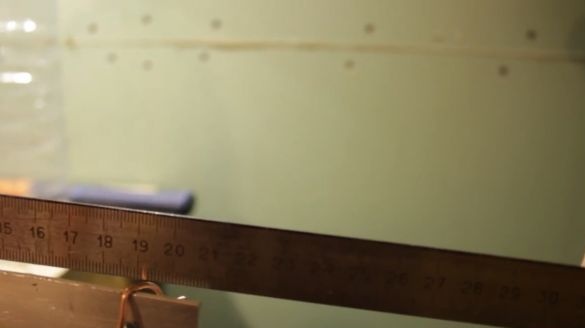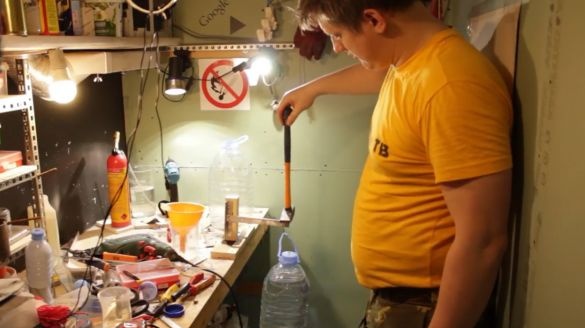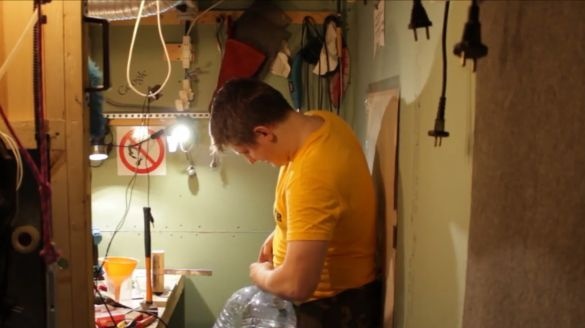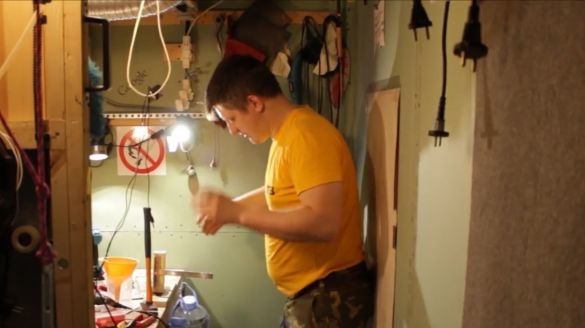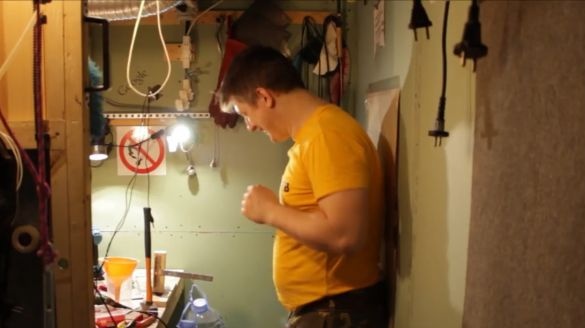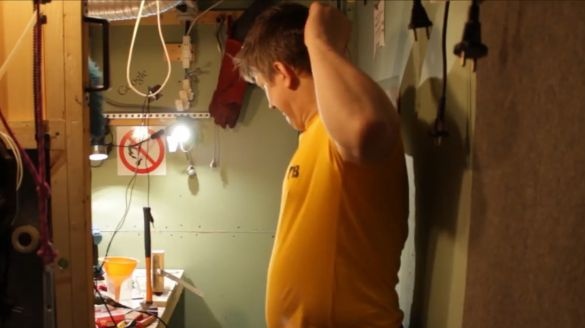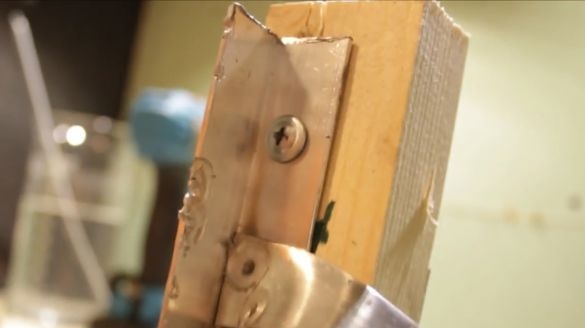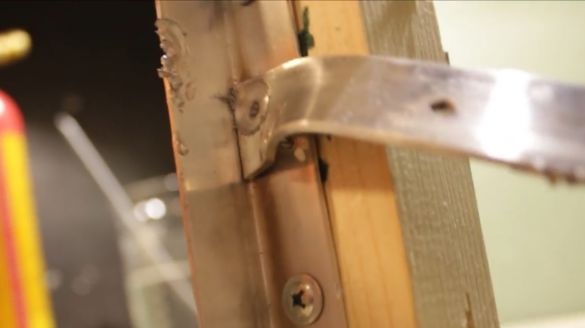Aluminum is easy enough to melt and with the help of friction it is easy to bring it to the required temperature. The so-called "friction welding" is based on this.
Due to the rotation of the nozzle, the workpiece material is heated, melted and mixed, creating a non-separable connection. Is it possible to home conditions with a minimum of tools to do something like that? Let's check it out!
After examining the drawings, the master made such a simple thing:
M4 bolt, two ordinary nuts and a third nut with a press washer. The protruding piece of the bolt must be sharpened on a cone, and its height should correspond to the thickness of the workpieces. Mechanical welding is really a post-apocalypse technology)))
The blanks will be two pieces of an aluminum strip 2 mm thick. First, try to fix them so that they touch any surfaces as little as possible.
We fix them so that they are firmly pressed against each other and drill a hole from which we will begin.
After the first attempt, the result is not impressive. It can be seen that we managed to move forward at the junction by several millimeters, but the process is very difficult.
It is necessary to level the surface of the nozzle and make the protrusion not so thick. The smoother the surface, the better the metals will adhere and the stronger the friction force. Here's what happened in the end.
During the second attempt, at first everything seemed to start well, but then the nozzle just started to float somewhere to the side and the seam again failed.
The third time, it was decided to fix the workpieces so that they bend as little as possible, because before that, the author noticed that the bend really hinders the normal pressing of the rotating nozzle to them. And still it is necessary to make a small gap so that it is easier to guide the tool.
As a result, we again did not get a normal seam ...
This time we will clean the surfaces of the parts being welded. Take the smaller workpieces and securely fasten them so that they practically do not bend and that there are no gaps between them, the denser the workpieces fit, the better.
At first, the metal warms up for a long time, but then the process goes much faster. And when the metal of the workpieces and the nozzle reach the operating temperature, then welding starts to go like clockwork.
Look, at first you can see how the nozzle walked from side to side, and then it went smoothly and created a very beautiful seam.
From the outside, the metal was welded, but from the reverse side it is clear that the seam is not too high quality.
To break, the resulting seam was strong enough and could not be torn with his hands. But in the opposite direction, the seam easily succumbed.
Since the metal did not boil deeply, the top layer melted and mixed well, while the inner layer did not.
After that, we will make another nozzle of a larger diameter and try to weld two pieces of aluminum fixed to sheet metal.
But even though the preforms were preheated with gas, it was still not possible to weld them, the nozzle stuck in one place and did not go further, apparently for such a volume of metal, a larger number of revolutions is required, this drill produces only up to 3000 revolutions.
The process of welding due to friction on the one hand is very simple, but on the other it is very complicated, since due to non-compliance with the technology it is difficult to get a good result. In order to weld two well done, they need to be thoroughly cleaned and pressed tightly to each other, then weld to half depth on one side of the seam, and then on the back side.
Due to the fact that the workpieces fit snugly against each other, the metal does not react with air and an oxide film is not formed. The resulting seam will be beautiful and strong enough.
In addition to seams, there is also spot welding! We will make a nozzle with an enlarged cone, its height is equal to the thickness of two blanks, in the thickest part the cone has 3 mm, and at the end - 1 mm.
In the parts to be joined, we pre-drill holes through, with a diameter of 1.5 mm.
After that, fry them with such a nozzle.
One hole warmed up a little better, the other a little worse. While the workpieces are hot, you can repeatedly go through the holes and melt them even more. This is how the holes look after welding, they washed a bit and drops of fused aluminum are visible below.
The master created such an unpretentious test bench, and now we will check the connection received, what load it can withstand.
We fasten a five-liter bottle near the connection, and pour water into the bottle, slowly, half a liter.
It seemed that already at three kilograms the connection was supposed to fall apart, but there it was! The connection withstood 5 kg!
After that, the master decided to check whether it could withstand even greater load and made a movable loop.
Hold on, hold on! Heh heh heh heh!
Hold on! It. some kind of paradox! Tense moment!
It holds ... Well what is it! A? Does it break here? A? Fearfully))
No, well, that’s the limit! 5 kilos! On the edge! And these two little dots hold! Can you imagine Well, gentlemen, engineers, who normally taught sopromat at the Polytechnic? Tell me, what is the lever here, and what is the effort to cut these two points?
The load is 19 cm apart. The author did not expect such a result. It seemed that it would fall off at the very beginning, at three kilograms, probably. Unfortunately, the seam cannot be brewed in such straightforwardly artisanal conditions. If there was at least a drilling machine, then it would be possible to fight. But with a drill, it’s simply, purely physically very difficult to keep it in place. She constantly tries to swim away somewhere. It pulls in one direction, then in the other. Very high resistance, this aluminum is so viscous. But spot welding was generally cool. This is just some kind of miracle, seriously!
Well, it’s necessary, however, to overwhelm her! Hammer 800 grams. 800 grams! The total weight of 5800 grams!
What else is there that is difficult for us, which is not a pity?
So, 10 kilos, we begin. The main thing is not to fall on your fingers.
No, well, in principle - it’s logical, it shouldn’t fall at such a distance, but it really is heavy.
Already the strip begins to bend sideways. All!
It turned out to be better to boil the upper rivet, and it remained in place. But the bottom popped up.
Thank you for attention. See you soon!
Author's video:

